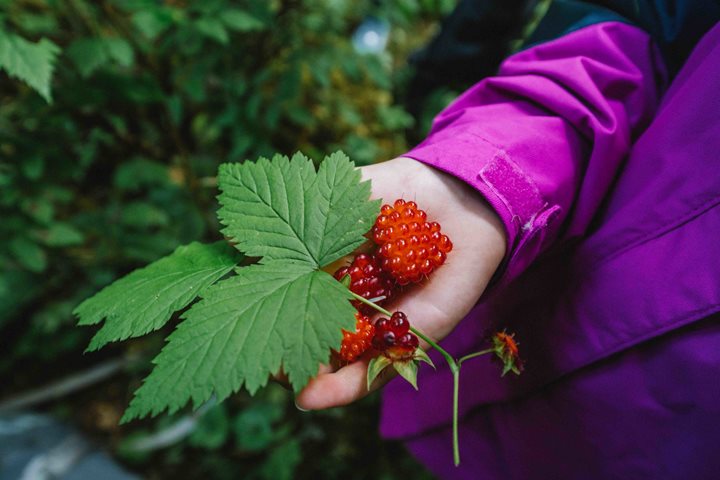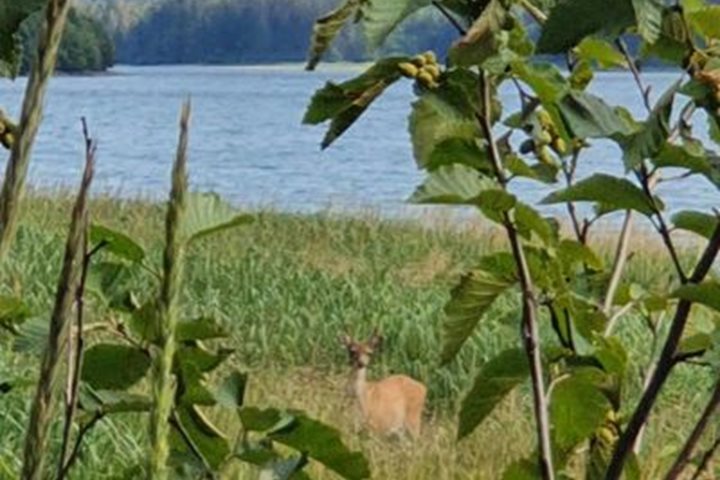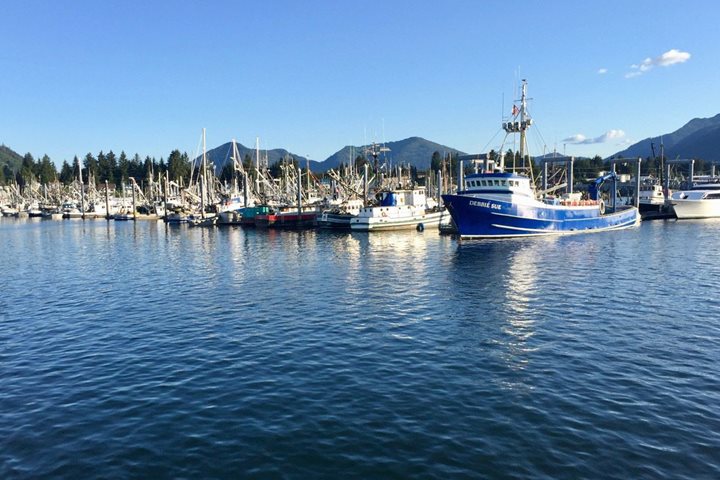Waking up to a slightly different wake-up call than we are used to, expedition leader Cindy Manning’s voice came in over the speakers to announce a group of bubble-netting humpback whales off the bow. Coffee took a back seat as we went for our cameras and binoculars. This was what Andy from the Alaska Whale Foundation had told us about - this was what we had been waiting for! The bow was filled with excitement as National Geographic Sea Lion followed along as the humpbacks enjoyed their early morning breakfast. When breakfast was called, it was hard to break away. Some of us stayed on the bow, never taking our eyes off the water, while others brought their breakfast up to the bow.
The humpbacks put on a show well into the morning and we were able to observe their behavior for over three and a half hours. This groups caller was identified by their fluke as Captain Hook. Between the groups displays at the surface to engulf their food, we could hear Captain Hook directing the group to work together to capture their breakfast. As the wind picked up, we took our cues from the gulls as they flew towards the bubble-netters looking for scraps. The day had just begun, and we could not wait to see what would happen next.
After departing from the humpbacks, we journeyed across Chatham Strait to Lake Eva. Our afternoon location provided opportunities to kayak and hike. The kayakers paddled up to the lagoon leading up to Lake Eva and observed harbor seals searching for fish trying to make it upstream. The hikers followed the wooded path along the stream and to the lake. There was plenty of fresh berry-filled bear scat along the trail, and chum salmon were observed in the stream, waiting for the tides to change in their favor.
The clouds were sparse, and the visibility was clear as we returned to the vessel after our last adventure in the Tongass National Forest. It was rare weather that allowed us to see the mountains of the Tracy Arm Fords Terror Wilderness Area where we had our first excursion, 86 miles away. Seeing those mountains and ice fields was a beautiful way of remembering how far we have traveled and how much we have seen over this week of expeditions.







